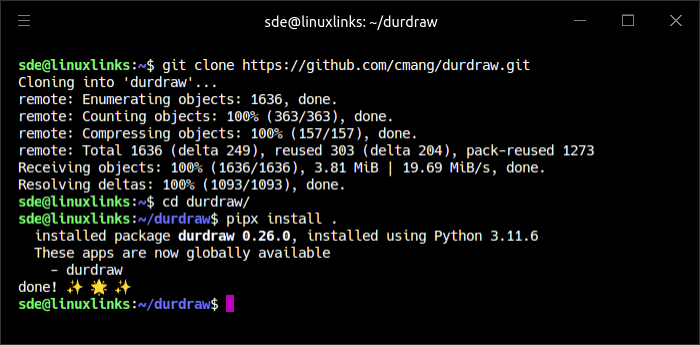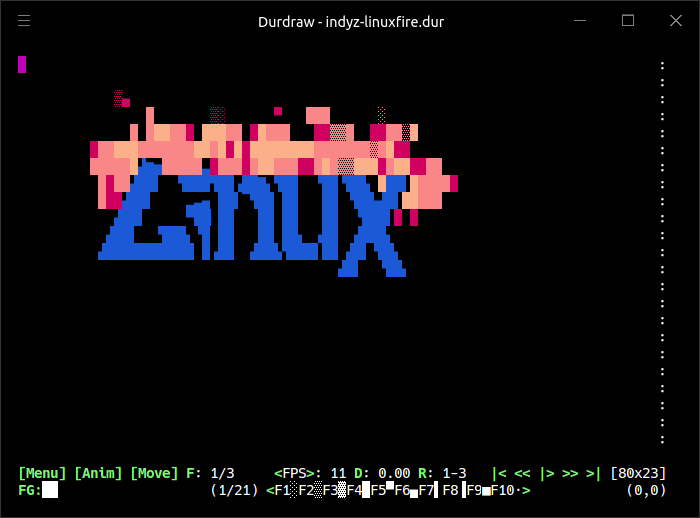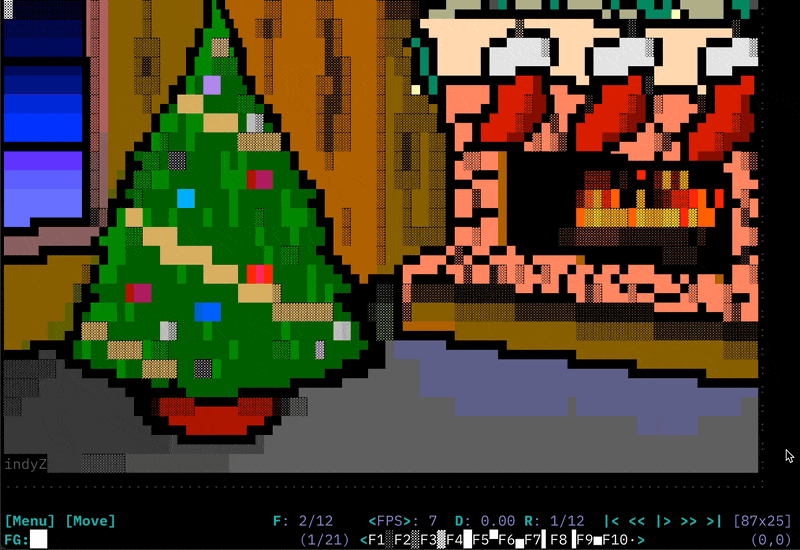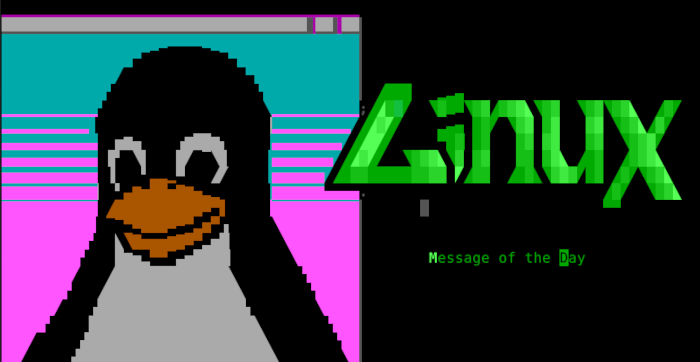Durdraw is a command-line ASCII, Unicode and ANSI art editor which seeks inspiration from classic ANSI software such as TheDraw, Aciddraw and Pablodraw.
This is free and open source software.
Installation
When we’re testing software under Ubuntu 23.10, we always prefer installing software with a .deb package, or by checking the availability of a cross-distro package (Snap, AppImage, Flatpak) with the help of the bauh graphical installer utility. In this case, we drew a blank for the latest release of Durdraw.
In this situation, it’s time for a manual installation. Fortunately, the process is very straightforward.
First, clone the project’s GitHub repository:
$ git clone https://github.com/cmang/durdraw.git
Change into the newly created directory.
$ cd durdraw
The project notes suggest installing with pip. On Ubuntu, that’s a bad idea. As pip has no environment isolation, we’ll install Durdraw in an isolated environment. There are quite a few different ways of doing this such as with pipx or conda. pipx is a good method here.
$ pipx install .

In Operation
Here’s an example art from the project’s examples section.

There’s interactive editing with the Function keys used to insert characters. The canvas size adapts to the size of your terminal. Most of the functionality is accessible from the Esc key. For example, we can access the viewer mode with Esc+V.
Features include:
- Probably the most interesting feature is the ability to create frame-based animations. Durdraw lets you fine control the frame rate, and delays per frame. Durdraw updates the animation a full frame at a time. This makes it less vulnerable to visual corruption from things like errant terminal characters, resized windows, line noise, etc.

There’s a whole range of commands specific for animation. The animations are stored in a JSON-formatted animation file.
Other useful features:
- 256 and 16 colour modes.
- Undo/Redo.
- Character Sets
- Viewer mode.
- Custom themes. Create a custom startup file where you can set a theme.
- Terminal mouse input. The mouse can be used for moving the cursor (including over SSH) and clicking buttons.
- DOS ANSI art viewing.
- Code Page 437 (IBM-PC/MS-DOS) and Unicode mixing and conversion.
- HTML output
- mIRC color output.
- Export loaded art to an ANSI file.
Summary
It’s all the weird and wonderful open source utilities that make Linux the most fascinating desktop operating system.
Durdraw is great fun offering the user the ability to generate imaginative ASCII and ANSI art. Editing animated colour ASCII art with the software is a welcome diversion from our everyday mundane tasks.
Don’t be put off by the fact this is command-line software. All the keyboard shortcuts are detailed in the online help.
Website: durdraw.org
Support: GitHub Code Repository
Developer: Sam Foster
License: BSD 3-Clause “New” or “Revised” License
Durdraw is written in Python. Learn Python with our recommended free books and free tutorials.

Hey! I am the creator of Durdraw. Thank you for the kind review of my program! BTW, The next LTS release of Ubuntu 24.04 will have a package for Durdraw.
That’s good news!
Btw. You have the wrong URL for the Github page (“Support”) link. It’s linking to the wrong repository.
Thanks for letting me know. We’re now linking to the correct repository.